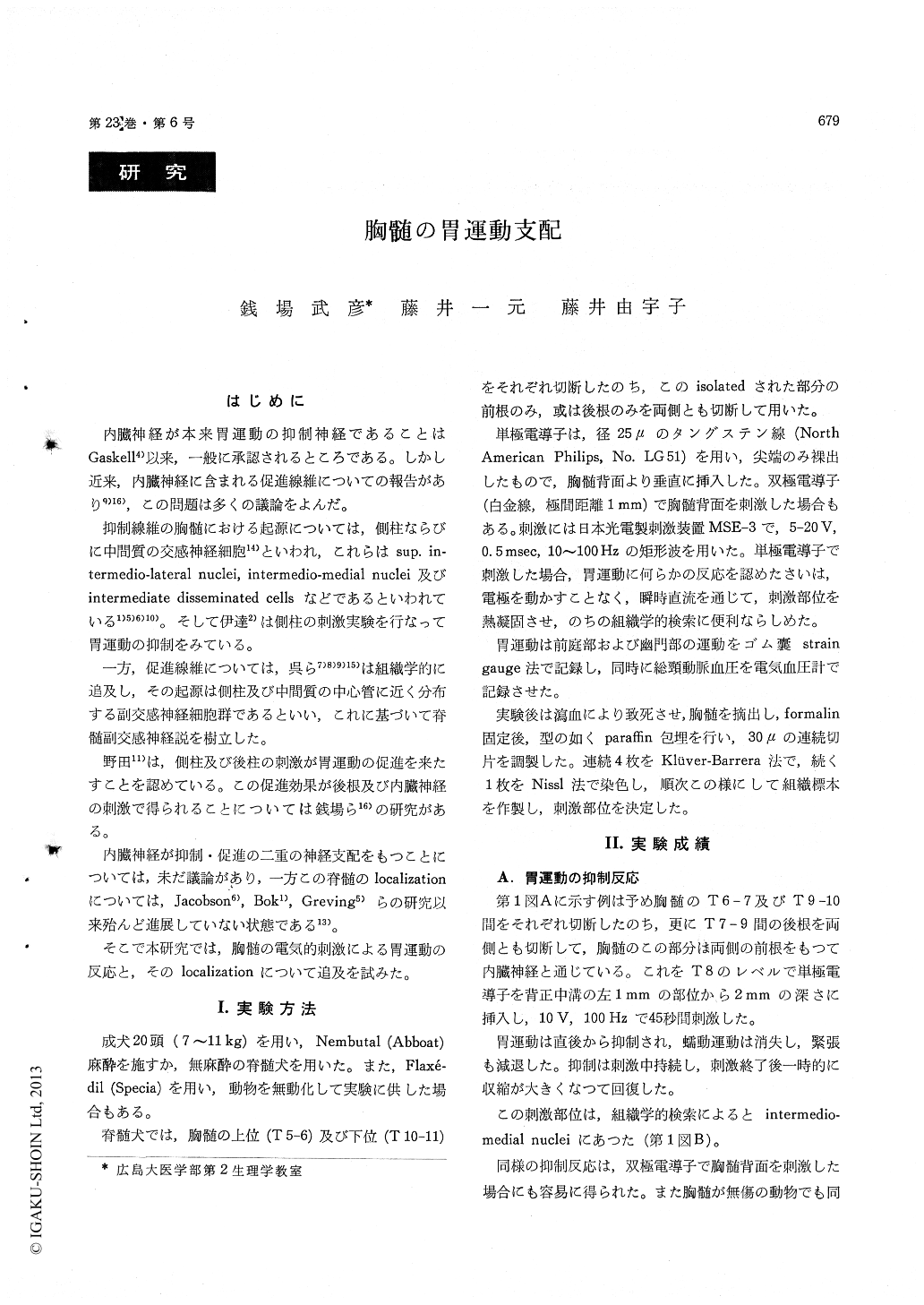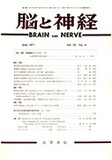Japanese
English
- 有料閲覧
- Abstract 文献概要
- 1ページ目 Look Inside
はじめに
内臓神経が本来胃運動の抑制神経であることはGaskell4)以来,一般に承認されるところである。しかし近来,内臓神経に含まれる促進線維についての報告があり9)16),この問題は多くの議論をよんだ。
抑制線維の胸髄における起源については,側柱ならびに中間質の交感神経細胞14)といわれ,これらはsup.in—termedio-lateral nuclei, intermedio-medial nuclei及びintermediate disseminated cellsなどであるといわれている1)5)6)10)。そして伊達2)は側柱の刺激実験を行なって胃運動の抑制をみている。
A study was made on the effect of electrical stimulation of tee thoracic cord and associated structure on gastric motility of anesthetized and non-anaesthetized dogs.
The inhibition of gastric motility was observed when stimulation was applied on the intact thoracic cord and also when applied on the isolated thoracic cord which were transected at the upper and lower level with the bilateral dorsal roots severed (the ventral roots were left intact). The inhibitory areas were located in the ventral region of the grey matter as shown in Table 1 and in Fig. 4.The intermedio-lateral nuclei and intermedio-medial nuclei were the most responsible areas for the inhihition of the stomach. The excitatory response of gastric motility was observed when stimulation was applied on the intact thoracic cord or the isolated thoracic cord betwee n T 6 and 9 with bilateral severance of the ventral roots (the dorsalroots were left intact). Excitation was produced through stimulation of the dorsal nuclei, intermedio-lateral nuclei, dorsal column and dorsal funicle (see Table 1 and Fig. 4). Thus, it can be concluded that the areas of inhibition and excitation are located at specific sites in the thoracic cord.

Copyright © 1971, Igaku-Shoin Ltd. All rights reserved.


